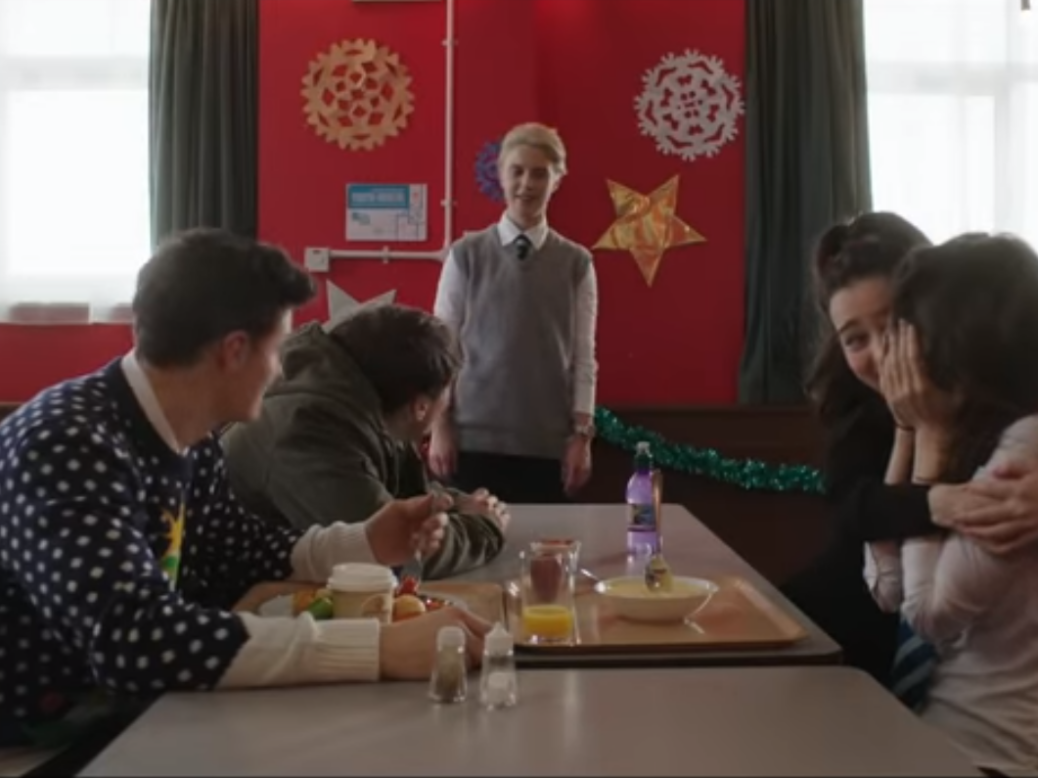
At the beginning of this year’s brilliant coming of age romcom Love, Simon, the titular schoolboy declares that his life is “totally normal”. That’s true, as long as the viewer is a comfortably wealthy, middle-class American teenager who lives in a spacious house in a friendly, trouble-free neighbourhood with his own car and carefree parents. It’s reality, but very much a reality with an asterisk made of privilege.
This privilege applies to the American high school movie in general. These are worlds populated entirely by obscenely attractive people arranging themselves in social cliques around cafeteria tables. Even films like American Pie, a couple of rungs down the social ladder from the likes of Mean Girls or Heathers, are explicitly set in schools near the top of the social strata. There’s coolness and style lurking just outside of the central narrative.
It’s fair to say that British school movies are very different. In a world where “spring break” is replaced by the less slogan-friendly Easter holidays and the red cups of light beer at American parties are swapped for two-litre bottles of strong cider, there’s a less aspirational quality to the classroom. British schools in the movies are either snooty and old-fashioned boarding schools that exist outside of any feasible reality, like Harry Potter’s magical Hogwarts, or borderline dystopian establishments in which every lesson seems to be an underdog story. Nobody wants to go to the school in Kes, though it’s a reasonable simulacrum for many of our experiences, and certainly more representative than anything John Hughes created.
While films set in American high schools during the 1980s span from the rebellious romance of The Breakfast Club to the edge and darkness of Heathers, depictions of British schooling during the decade of Thatcherism include the shabby buildings and political anger of the visceral drama This Is England. In stark contrast to the sharp suits and fancy dates of US high school tales, romantic evenings in British films deal with the ill-fitting jackets and walks to the chip shop of 1981 classic Gregory’s Girl. It’s not that the British movies are necessarily better, but they’re far closer to shedding real light on the society they depict. Politics is a huge feature in British school movies, but it’s often absent from the stateside equivalents.
This year’s Halloween release Slaughterhouse Rulez and the upcoming festive zombie musical – yes, really – Anna and the Apocalypse both delve into the genre of British “secondary school” films, but approach it from very different angles that speak to the stark inequality in our society.
Slaughterhouse Rulez, directed by Crispian Mills, is firmly in the Hogwarts mould. Born to parents in the film industry, Mills spent his childhood bouncing between private schools where he was “too common” and state schools where he was “too posh”. It’s the former that Mills draws on for this movie, painting the denizens of the school as grotesque caricatures of privilege, from the aggressively Aryan prefect Clegg to Michael Sheen’s headmaster, who counts a corrupt fracking company boss as a school chum. The movie doesn’t always come together, but its barbed social commentary is a delight.
At the other end of the spectrum is Anna and the Apocalypse which, like Gregory’s Girl, takes place largely within the confines of a slightly grubby comprehensive school in small-town Scotland. Things are already grim and knowingly tacky before zombies arrive, and director John McPhail’s movie uses his film’s genre-bending position as a musical to play with tropes. The cafeteria dance scenes of films like Fame and this year’s risible Status Update are delightfully lampooned with an enormous performance number that culminates in everyone just sitting down and eating their school dinner slop as if nothing has happened.
It’s a single scene that perfectly illustrates the difference between high school films in the UK and in the USA. Our movies are about reality, however grim and unequal, whereas American films deal in aspiration and gloss – set in a borderline fantasy world. The title character in Love, Simon and the prissy adolescents of Heathers don’t reflect any recognisable reality.
A lot of us, though, have been to a school like the one depicted in Anna and the Apocalypse, albeit with fewer musical explosions and, one would assume, a great deal less of the danger presented by shambling undead. On most days, at least.





